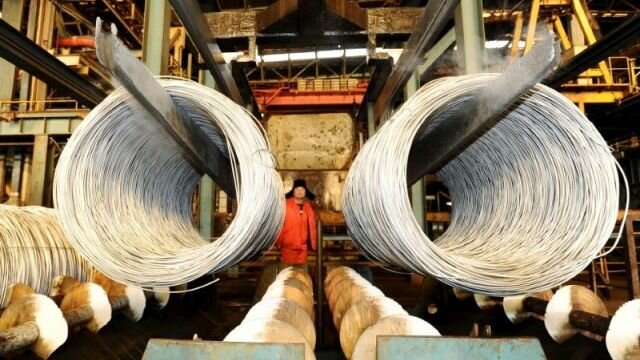
BEIJING (Reuters) - Activity in China's manufacturing sector expanded at the fastest pace in over two years in October thanks to a construction boom,
with smaller firms growing more upbeat, suggesting the world's second-largest economy is stabilising and getting on steadier footing.
Signs of a more broader-based recovery will be welcomed by the government amid growing views that a housing rally may have peaked. Much of China's better-than-expected growth this year has been highly reliant on spending by often inefficient state firms as private investment languished.
The official Purchasing Managers' Index (PMI) stood at 51.2 in October, much stronger than September and the highest reading since July 2014.
Economists had expected a far more modest reading of 50.4, in line with the previous month. Levels above 50 indicate an expansion in activity on a monthly basis.
China's economy expanded at a steady 6.7 percent clip in the third quarter and looks set to hit Beijing's full-year target of 6.5 to 7 percent, fueled by stronger government infrastructure spending, record bank lending and a red-hot property market that are adding to a growing pile of debt.
The construction spree has fueled stronger demand and higher prices for building materials from cement to steel, boosting sales for related companies from engineering firms to property agents. Global construction equipment maker Caterpillar (CAT.N) said last week it sees further modest improvement in 2017.
"The significant improvement in PMI is largely driven by commodity prices," said Singapore-based economist Zhou Hao at Commerzbank.
Beijing's plans to cut excess industrial capacity and factories' need to replenish low inventories are also buoying prices for commodities such as coal and steel, and boosting profits, said David Qu, a Shanghai-based economist from ANZ.
Factory output accelerated in October, with the sub-index rising to 53.3 in October from 52.8 in September.
Total new orders also showed solid improvement, rising to 52.8 from September's 50.9. But new export orders contracted slightly, pointing to persistent sluggishness in global demand that has weighed on Asia's export-reliant economies for nearly two years.
A similar business survey showed activity in China's services sector expanded at the fastest pace since December 2015, with the official reading picking up to 54.0 in October from 53.7 in September.
PRIVATE SECTOR PICKING UP?
Both the official factory survey and a private survey by Caixin/Markit showed conditions were improving for smaller and medium-sized Chinese firms, which have struggled for traction as Beijing relies more on large state firms to spur activity.
The Caixin survey showed output expanded at the quickest pace since March 2011.
If the trend does not prove to be a flash in the pan, it may suggest that government efforts to revive weak private investment are starting to pay off. Private investment growth picked up to 4.5 percent in September after falling to record lows in recent months.
"I suspect the growth has more to do with a recovery in private investment," said Capital Economics' Julian Evans-Pritchard in Singapore.
"The government has been doing a lot to lower the borrowing costs for the private sector. But I doubt the strength will sustain as those measures are not fundamental reforms," He said.
IS GROWTH SUSTAINABLE?
While Asian stock markets edged higher after the upbeat China reports, financial markets remain unconvinced about how long the rebound can last, especially given the rapid rise in debt being used to fuel growth, said Cliff Tan, East Asia head of global markets research at Bank of Tokyo-Mitsubishi UFJ.
ANZ economist Qu agreed the economy is not out of the woods.
"China is still cutting excessive capacity in heavy industries and the global economy is still quite sluggish."
Despite the apparent surge in domestic demand, manufacturers continued to cut jobs, the factory surveys showed.
Signs are also growing that the housing boom which has helped support the economy this year may be peaking.
A measure of construction activity remained robust at 61.8, little changed from September, but a property sector reading contracted.
House prices and sales have cooled in recent weeks as more cities impose restrictions on purchases to curb soaring home prices.
-
Oil Prices Rise from One-month Lows after OPEC Approves Strategy
-
Pfizer Profit just Misses; Company Scraps Cholesterol DrugNext >
